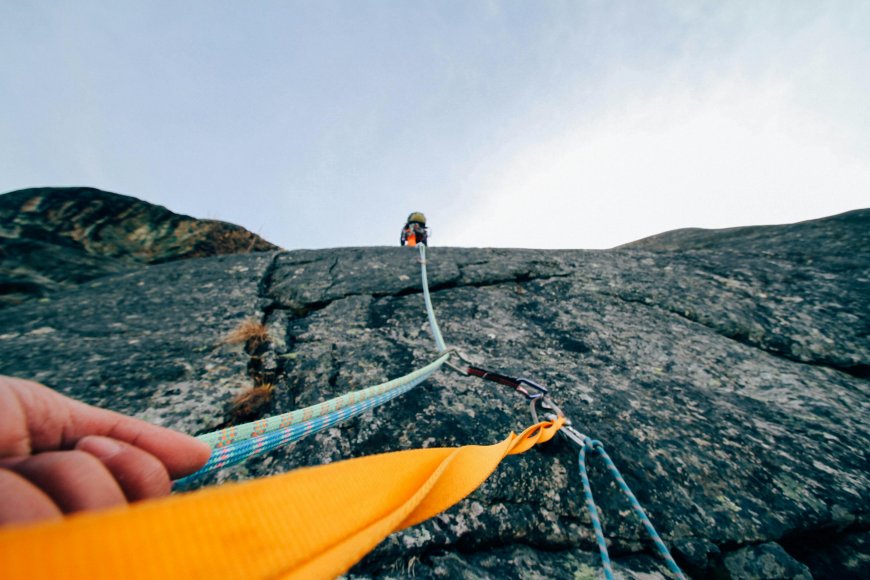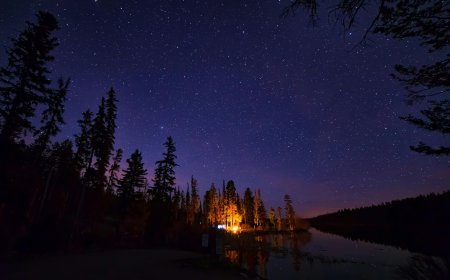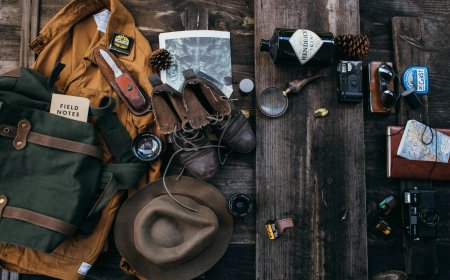How to stay safe while mountain climbing
Mountain climbing safety requires a balanced combination of good preparation and proper equipment. Climbers should plan the appropriate route and check weather conditions before starting the journey. Using protective gear such as a safety helmet and climbing ropes can help reduce the risk of falls. Climbers should also maintain constant communication with their team and stay informed about their environment and weather conditions. By focusing intensely on these factors, climbers can enjoy the experience safely and confidently.

Mountain climbing safety requires a balanced combination of good preparation and proper equipment. Climbers should plan the appropriate route and check weather conditions before starting the journey. Using protective gear such as a safety helmet and climbing ropes can help reduce the risk of falls. Climbers should also maintain constant communication with their team and stay informed about their environment and weather conditions. By focusing intensely on these factors, climbers can enjoy the experience safely and confidently.
How to stay safe while mountain climbing
The fundamentals of mountain climbing safety form the cornerstone that every beginner or professional climber must adhere to in order to ensure a safe and enjoyable climbing experience. Mountain climbing safety begins with thorough planning before the trip, where climbers must study the proposed route and analyze potential risks along the path. Planning also includes checking expected weather conditions and assessing their impact on the journey.
In addition to planning, climbers must use protective equipment correctly according to safety standards. This equipment includes helmets to protect the head from accidental falls of rocks or tools, and climbing ropes to secure ascent and guide descent safely. Regular inspection of this equipment is necessary to ensure its safety and efficiency.
Continuous communication and connection with the climbing team are also crucial aspects of mountain climbing safety, whether through mobile phones or radios. This allows climbers to collaborate in emergencies and provide assistance when needed.
Furthermore, climbers should carefully assess the surrounding environment and identify potential risks such as ice accumulations or loose rocks. These risks should be avoided as much as possible, and necessary preventive measures should be taken to mitigate them.
The basics of mountain climbing safety include thorough planning, proper use of protective equipment, continuous communication, and evaluation of the surrounding environment. By following these guidelines, climbers can enjoy a safe and rewarding climbing experience.
Utilizing protective equipment
Utilizing protective equipment is an essential part of making mountain climbing experiences safe and secure. This equipment includes a variety of items that provide protection for climbers facing potential risks during their ascent. Proper use of this equipment significantly reduces the risk of injuries and increases confidence and comfort levels during the journey.
Protective equipment starts with the helmet, which is one of the most important elements for mountain climbing safety. The helmet provides protection for the head from falling rocks or unexpected falls. Choosing a sturdy helmet that fits the head size and adjusting it properly ensures maximum protection.
Next comes the role of climbing ropes, which are used to secure climbers to rocks or to each other to safely ascend and descend. Climbing ropes should be regularly inspected to ensure their safety and free from any damage that may affect their performance during climbing.
Additionally, using protective equipment also includes using safety harnesses and anchoring devices, which are used to effectively secure climbers to rocks or mountain structures while moving.
Using protective equipment is a vital part of mountain climbing safety, as these items provide effective protection for climbers and help them move with confidence and safety in challenging mountain environments.
Avoiding risks
Avoiding risks is an essential part of practicing mountain climbing safely and responsibly. This aspect includes many steps and techniques that can be taken to reduce potential risks and ensure the safety of climbers.
1. Route and condition assessment: Before starting the climb, climbers should carefully assess the proposed route and identify potential risks along the path. They should also consider expected weather conditions and estimate their impact on the journey.
2. Ascent and descent technique: Climbers should apply safe and effective ascent and descent techniques, such as proper weight distribution and using fixed points to secure ropes.
3. Avoiding hazardous paths: Climbers should avoid dangerous areas such as rockfalls or slippery snow patches that may pose a risk to their safety.
4. Using protective equipment: Climbers should use protective equipment correctly according to proper standards, such as wearing helmets and using climbing ropes for safety.
5. Communication: Climbers should maintain continuous communication with their team and exchange information about potential risks and warnings.
6. Evaluating personal skills: Climbers should regularly assess their personal skills and avoid routes that exceed their capabilities.
Avoiding risks requires good planning, using proper techniques, and effective communication, and it is an essential part of maintaining mountain climbing safety and avoiding unwanted accidents.
Anchor Techniques and Safe Rope Usage in Mountain Climbing
Anchor Techniques and Safe Rope Usage are essential components of mountain climbing safety, as they help secure climbers and reduce the risk of falls and injuries.
1. Choosing the right ropes: Climbers should select appropriate ropes based on the type of ascent and terrain. Ropes should be strong, durable, and capable of bearing the weight they will be subjected to during climbing.
2. Learning proper knots and tying techniques: Climbers should learn proper knots and how to tie ropes securely. Common knots to know include the double figure-eight knot, the clove hitch, and the figure-eight knot.
3. Secure rope anchoring: Climbers must ensure that ropes are securely anchored to surrounding rocks or trees. Anchor points should be strong and reliable to safely bear the climber's weight.
4. Using anchoring devices: Anchoring devices such as cams and flexible ropes can be used to enhance safety and stabilize ropes more securely.
5. Handling ropes with caution: Climbers should handle ropes carefully, avoiding tangling and tripping over them during climbing. They should be aware of the rope's location and move with precise, calculated movements.
By employing anchor techniques and safe rope usage, climbers can achieve greater safety during mountain climbing and enjoy a risk-free climbing experience.
Confirming mountain climbing safety
Confirming mountain climbing safety requires taking several steps and applying specific techniques to ensure the safety of climbers during the journey.
1. Ensure proper preparation: Confirming mountain climbing safety begins with thorough preparation before the trip. Climbers should check the readiness of their equipment and ensure its safety, including climbing ropes, harnesses, and helmets.
2. Assess risks: Identifying and assessing potential risks along the route and understanding how to effectively manage them is essential. This includes checking weather conditions, evaluating terrain, and the surrounding environment.
3. Apply safe anchoring techniques: Climbers should use proper and safe anchoring techniques to secure themselves and their companions during climbing. This includes learning how to tie ropes correctly and using anchors and other tools to secure ascent and descent.
4. Maintain effective communication: Climbers should communicate effectively with each other and with the climbing team. Continuous communication helps in exchanging information about potential risks and warnings and facilitates working as one team.
5. Regular safety checks: Climbers should regularly inspect safety equipment during the journey to ensure its safety and proper performance. This includes checking ropes for any damage and properly adjusting helmets.
6. Emergency response: Climbers should be prepared to deal with any emergency situation that may occur during climbing. Developing an emergency plan and knowing how to respond to injuries, getting lost, or adverse weather conditions is crucial.
By using these steps and applying these techniques, climbers can confirm mountain climbing safety and enjoy a safe and rewarding experience in the mountains.
Risk Analysis and Identifying Safe Routes in Mountain Climbing
Risk analysis and identifying safe routes in mountain climbing are vital components of ensuring a safe and reliable climbing experience.
1. Risk analysis: The process of risk analysis begins with a thorough assessment of the surrounding environment, focusing on weather conditions, terrain, and equipment used. Climbers should identify potential risks such as falling rocks, slippery snow, and sudden weather changes.
2. Impact assessment: After identifying potential risks, climbers should assess the potential impact of each hazard on their safety and on the trip as a whole. This includes assessing the severity of each hazard and the likelihood of its occurrence.
3. Developing prevention strategies: Based on risk analysis, climbers should develop appropriate prevention strategies to mitigate risks and reduce potential negative impacts. This includes identifying safe routes for ascent and descent, and determining safe anchor points for securing ropes and protective equipment.
4. Making informed decisions: Identifying safe routes in mountain climbing relies on making informed decisions based on risk analysis and impact assessment. These decisions should be well-informed and based on experience and knowledge.
5. Monitoring conditions and adapting: During the journey, climbers should carefully monitor conditions and adapt to any unexpected changes in the environment. They should be able to react quickly and take necessary actions to ensure their safety.
By using these steps and techniques, climbers can accurately analyze risks and identify safe routes for mountain climbing, thereby enhancing their safety and reducing the risk of accidents during the trip.
How to Build Self-Confidence While Mountain Climbing
Building self-confidence is essential to ensure safety while mountain climbing and to enjoy a fulfilling experience in the wilderness.
1. Understanding Personal Abilities: Climbers should identify their strengths and weaknesses in mountain climbing, including technical and physical skills required for safe climbing. Recognizing areas for improvement is crucial.
2. Training and Development: Through regular and continuous training, climbers can enhance their skills and build self-confidence. This includes practical exercises on various rock formations and gaining experience in dealing with different climbing situations and challenges.
3. Gradual Boundary Pushing: Climbers should set achievable goals and work towards them slowly and gradually. By progressing cautiously and overcoming challenges step by step, climbers can build self-confidence and make continuous progress in their climbing practice.
4. Learning from Past Experiences: Climbers can use past experiences as an opportunity to boost their confidence and improve their skills. By analyzing mistakes and learning from them, climbers can avoid errors in the future and increase their confidence in their ability to climb safely.
5. Engaging with the Climbing Community: Climbers can benefit from the support and encouragement of the climbing community, whether by joining local climbing groups or connecting with professional climbers for advice and guidance.
By following these steps and focusing on self-confidence development, climbers can achieve safety in mountain climbing and enjoy a satisfying and rewarding experience in the wilderness.
Summary
To ensure mountain climbing safety, specific procedures and techniques must be followed. It begins with thorough planning and evaluating the proposed route and expected weather conditions. Proper use of protective equipment like helmets and climbing ropes is also essential, with regular inspection to ensure their safety. Continuous communication with the climbing team and offering assistance when needed is also necessary. Additionally, risk assessment and identifying safe routes are vital, along with building self-confidence through training and gradually pushing boundaries. By following these guidelines, climbers can enjoy a safe and confident climbing experience in the mountainous environment.
Sources
1. American Alpine Club The club's website provides articles and resources on mountain climbing safety, offering tips for beginners and professionals alike.
2. UIAA - International Climbing and Mountaineering Federation The official website of the International Climbing and Mountaineering Federation offers resources on mountain climbing safety and safety standards.
3. REI Co-op REI offers articles and videos on rope techniques and proper use of protective equipment in mountain climbing.
What's Your Reaction?




































































































































































